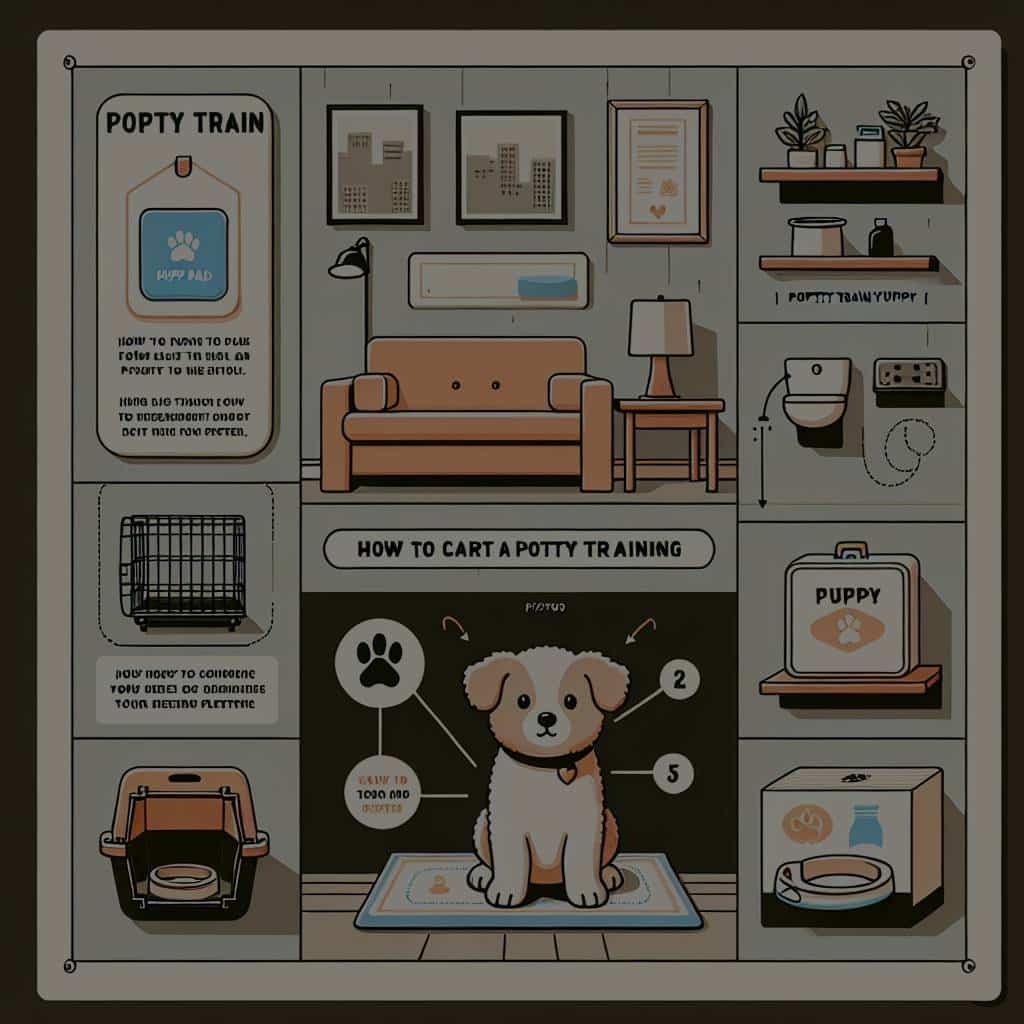What’s the Best Method for Potty Training a Puppy in an Apartment Setting?

When you welcome a new puppy into your apartment, you’re not just introducing a new member to your family; you’re also accepting the challenge of training this new addition. One of the most vital tasks that you need to accomplish is potty training. As loving pet owners, you might be wondering, "What’s the best method for potty training a puppy in an apartment setting?" This article aims to provide comprehensive and valuable insights into this topic.
Starting Off the Right Way: Establishing a Routine
When it comes to potty training, one critical factor is establishing a routine. The life of a puppy revolves around sleeping, eating, and playing, and most importantly, they will usually need to go to the toilet after each of these activities. While it may take several weeks for a routine to be established, it will help your pup understand when it’s time to go outside.
Also to discover : What Are the Best Natural Remedies for Flea and Tick Prevention in Dogs?
Be patient with your puppy, and remember that it’s a learning process for them too. It’s necessary to figure out the puppy’s natural schedule based on their age, and then work out a routine around it. For example, younger puppies need to relieve themselves every couple of hours, while older puppies can hold off for longer periods.
When it’s potty time, always bring your puppy to the same spot. This will help them associate the area with going to the bathroom. You can even use a specific word or phrase to signal them it’s time to go. With consistency and patience, they will eventually start to understand what’s expected of them.
Also read : How to Address Excessive Grooming Behaviors in Cats?
Understanding the Importance of Crate Training
You may have heard about crate training, but what exactly does it entail? Essentially, the idea is to keep your puppy in a crate or confined space when you can’t supervise them. This can be incredibly helpful for potty training, especially in an apartment setting where outdoor access is limited.
Puppies generally don’t like to soil their sleeping areas, so keeping them in a crate encourages them to hold their bladder until they’re let out. This is not about punishment, but about creating a safe space for your pet and limiting their ability to make mistakes. Remember, the crate should be big enough for the puppy to stand, turn around, and lie down, but not too big that they might pee or poop in one corner.
Crate training can be a useful tool, but remember not to leave the dog in the crate for too long. Puppies can’t control their bladders for very long, so ensure they get regular bathroom breaks.
Utilizing Potty Pad Training
Potty pad training can be a viable option for apartment dwellers. Essentially, a potty pad is a square of absorbent material that you place on the floor for your puppy to use when it’s time to go. The idea is to train your dog to use these pads when they can’t go outside.
The steps to potty pad training are similar to regular potty training. Begin by restricting your pet to a certain area of your apartment and gradually increase their access as they learn the rules. Whenever it’s time for a bathroom break, lead your dog to the pad.
While potty pads can be a great tool, it’s important to remember that they are just that – a tool, not a replacement for regular outdoor bathroom breaks.
The Role of Positive Reinforcement in Potty Training
Positive reinforcement plays a crucial role in potty training. It means rewarding your puppy for good behavior, such as going to the toilet in the correct area. This encourages them to repeat the behavior in the future. Rewards could be treats, praise, or playtime.
Always reward your pup immediately after they go to the toilet in the right place. This will help them make the connection between their behavior and the reward. Be patient and consistent. These are the keys to successful potty training.
Dealing with Accidents During Potty Training
Despite your best efforts, accidents are bound to happen. It’s important to clean up accidents thoroughly to remove the scent, as it can encourage the puppy to go again in the same spot. Use an enzymatic cleaner specifically designed for pet messes.
Remember to avoid punishing your puppy for accidents. They are still learning and don’t understand what they’ve done wrong. Instead of getting angry, try to figure out why the accident happened. Perhaps you missed their signal to go outside, or maybe your schedule is not quite in sync with theirs.
Potty training a puppy in an apartment setting can be a challenging but rewarding experience. Establishing a routine, utilizing tools like crates and potty pads, and using positive reinforcement are all effective ways to help your pup. Remember, patience and consistency are key. Good luck with your potty training journey!
Navigating Nighttime Training and Dealing with Separation Anxiety
Now that you’ve got the daytime potty training routine down, it’s time to discuss nighttime training and how to handle potential separation anxiety in your puppy. As you might already know, puppies have small bladders and need frequent potty breaks. This can make nighttime a bit tricky, especially in an apartment setting where you can’t simply open the door to let them out.
Begin by setting an alarm to wake up for nighttime potty breaks. The frequency will depend on your puppy’s age and bladder control. For very young puppies, this might mean waking up every two hours or so. As your puppy grows and develops better bladder control, you can gradually increase the time between nighttime potty breaks.
During these outings, keep things calm and quiet. The goal is to let your puppy do their business and then get them back to sleep as quickly as possible. Avoid turning on bright lights or engaging in playtime, as this can stimulate your puppy and make it harder for them to settle back down.
Separation anxiety can also be a concern, especially if you live in an apartment where neighbors might not appreciate the sound of a whining puppy. Crate training can help with this, as it gives your puppy a safe and secure space of their own. If your puppy whines or cries in the crate, resist the urge to let them out immediately. Instead, wait until they quiet down before letting them out. This teaches them that whining won’t get them what they want.
Wrapping Up: Ensuring Success in Potty Training Your Puppy
Potty training a puppy in an apartment definitely comes with its own set of challenges. However, with patience, consistency, and the right approach, you can successfully train your puppy and help them become a well-behaved member of your household.
To wrap up, the most effective strategies for potty training a puppy in an apartment include establishing a routine, crate training, using potty pads, and implementing positive reinforcement. Nighttime training and dealing with separation anxiety are also important considerations.
Remember, it’s all about patience and consistency. Don’t expect your puppy to understand everything right away. Celebrate small victories and remember that setbacks are just opportunities for learning and growth.
Finally, don’t forget to enjoy the process. After all, training your puppy is not just about teaching them where to go potty. It’s also an opportunity to bond with your new family member and to lay the groundwork for a happy and healthy relationship with your pet.
Living in an apartment doesn’t have to limit your ability to effectively potty train your puppy. With these tips and strategies, you can help your puppy navigate their new home and make the potty training process smoother and more enjoyable for both of you.
